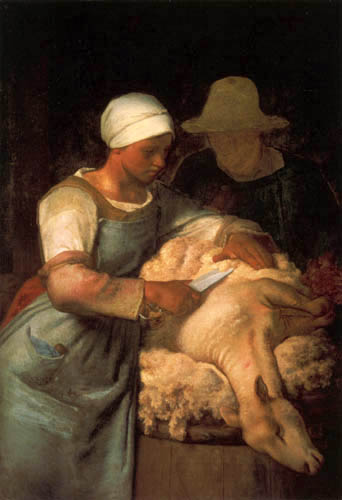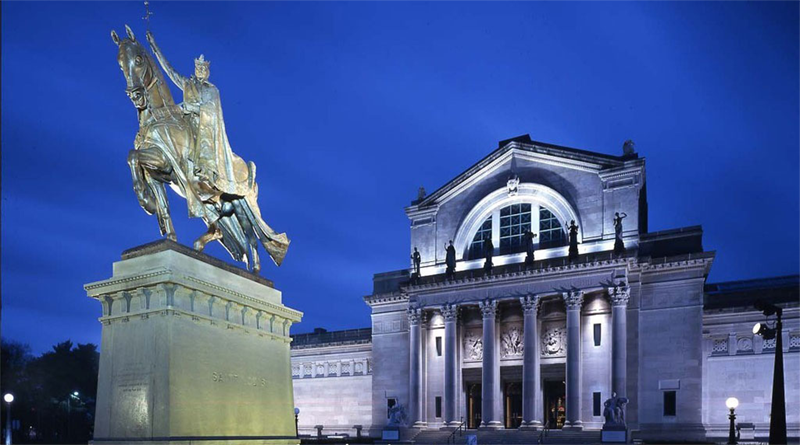These thoughts were written by Gabe, one of our 2020 summer interns. The opinions expressed herein do not reflect those of Civitas other than respect for the value of open dialogue.
I love modern art. I’ve loved modern art for some time now. It’s entrapping, from the romantics to the post-impressionists to the abstract expressionists to the color field painters. I can (and have) spent hours with the stuff. I can get to Mondrian’s “Composition of Red and White” in the St. Louis Art Museum with my eyes closed, and it’s usually the first thing I head towards whenever I’m inside.
The second is, without failure, the German Art of the 1980s. Gerhard Richter’s impossibly large, distinctly abstract art haunts me as I view it. With canvases as large as my freshman dorm’s floorplan, the leviathans demand attention and only give questions, never answers. And, of course it does. Richter’s paintings in the SLAM were made as the Berlin wall was falling and Germany was beginning to pull itself back together after decades of post-war separation. It was a time of elation, sure, but it was anything but certain.
When the Art Museum announced that it was reopening, after all this time, I knew I had to go as soon as possible. When they announced they were keeping their exhibition on Millet up through the summer, I knew I had to go as soon as possible.
Jean-François Millet seems to have fallen outside of the zeitgeist nearly 150 years after his death. In the late 19th century, he was among the most famous modern artists. After all, this is the man who helped inspire Vincent van Gogh, Claude Monet, and Salvador Dalí, among others, his work did beyond well at auction, and his influence is deliberate and clear. One of what’s now called the “realist painters,” his art rejected most of Romanticism. Gone were the excessive emotions of the Romantics; gone was the drama and intensity of the Romantics. In their places lied art focused on the real (hence the name.) The goal was to paint people as they were, not how we envision them to be.
Which, for Millet, meant painting the working fields of France. At the time of Millet’s life, around 75% of the population was working on rural farmland in France. A farmer in another life, Millet’s work is dominated by motifs of sowing seed, harvesting wheat, and tending to livestock.

It was an inherently political action. The French Revolution of 1848 had just occurred and given male farmers suffrage, and the public eye was not particularly kind nor caring about the farming class. Millet turned them into heroes, often the focal point of his works. He painted them in subdued rooms, shearing sheep calmly; as field workers taking a short rest; or as farmers tilling the soil. It was a motif that others copied, the idea of the noble yeoman farmer, and the gallery dedicated to Millet is dotted with work by his Italian and Dutch contemporaries throughout the modern era.
And what an experience Millet left behind. I love Gerhard Richter because I’m afraid that if I turn away from his work, I’ll miss something. Each messy stroke and abstract curl pieces itself together in a different way each blink. In the absence of form, the brain demands it.
Jean-François Millet did not leave much to the imagination. By virtue of being a realist, Millet sought to produce images as accurately as possible, and they are encapsulating. I couldn’t pull myself away as I gazed into snapshots of pastoral life. Millet’s short, rough brushstrokes drew criticism at the time, but now 150 years later, it doesn’t seem like there could be any other choice.
I still can’t seem to get past Millet choosing to paint regular people, the laboring poor of France. There’s debate on how much power art grants its subjects. (Vonnegut famously said that “during the Vietnam War, every respectable artist in this country was against the war. It was like a laser beam. We were all aimed in the same direction. The power of this weapon turns out to be that of a custard pie dropped from a stepladder six feet high.”) Millet put the working class on a pedestal and inspired a generation of impressionists and post-impressionists along the way. That will never change, no matter how far he falls or has fallen out of the zeitgeist.
Though I hope the St. Louis Art Museum’s exhibition can act as a catalyst to welcome Millet alongside those like Van Gogh, Monet, and Dalí where he rightfully belongs. Millet and Modern Art: from Van Gogh to Dalí is on display through September 7th, 2020. I can’t recommend the exhibition enough, nor the Art Museum itself. At the time of writing, SLAM is following new protocols given the COVID-19 epidemic, which you can read here.

